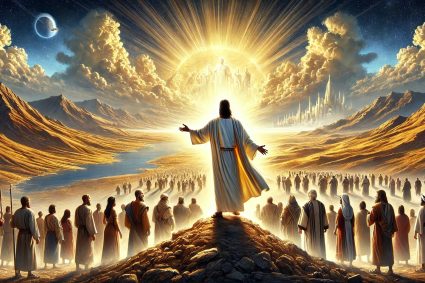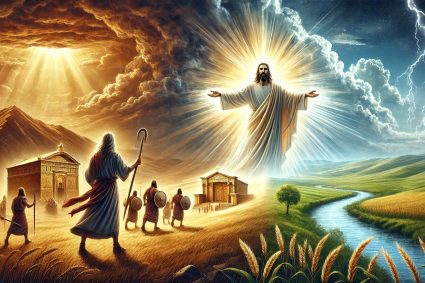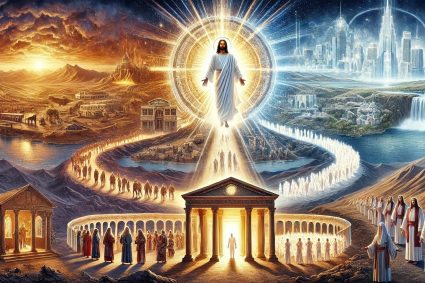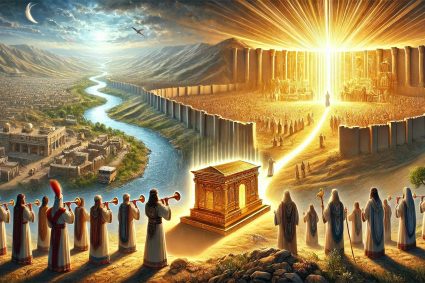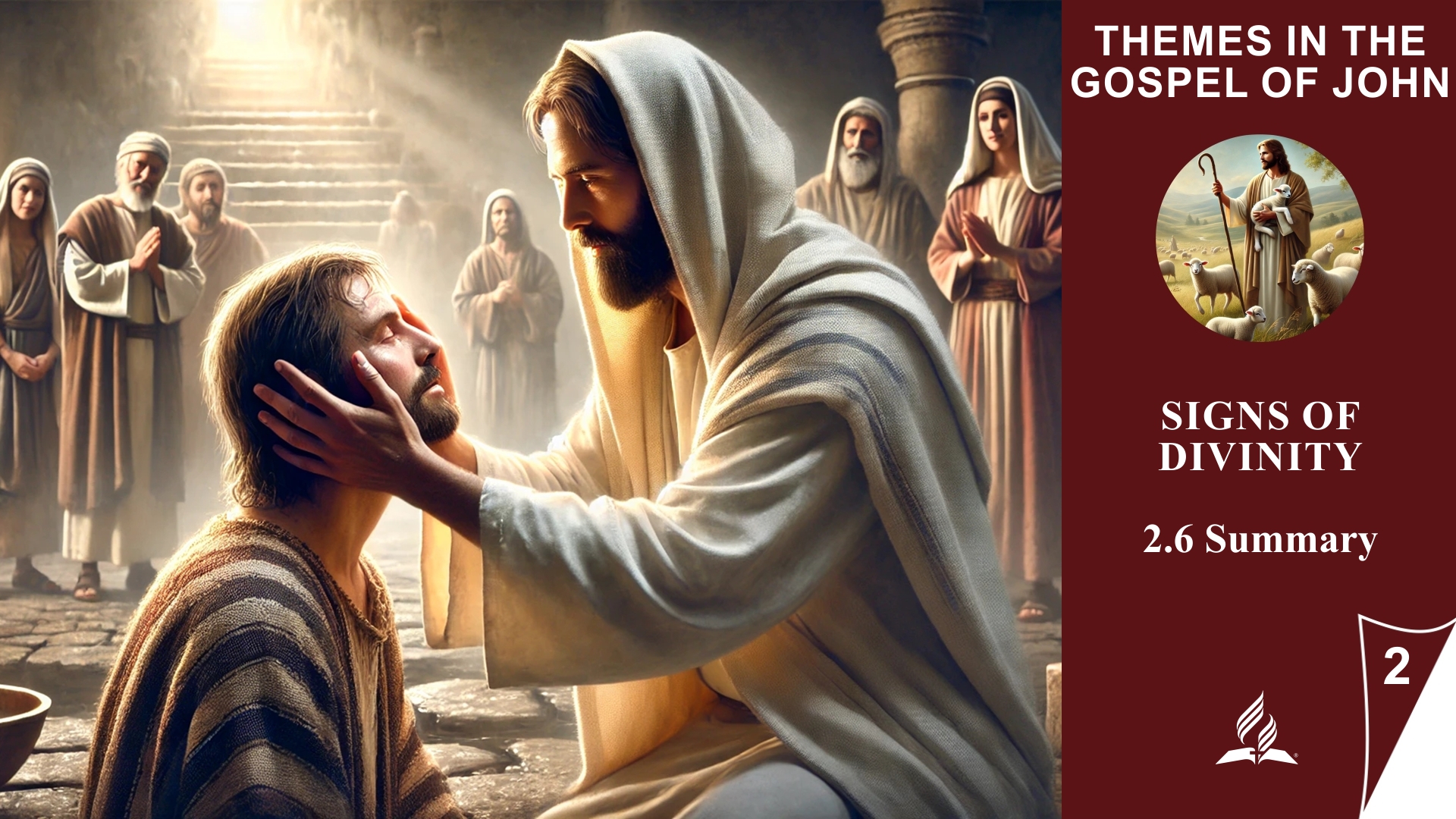


2.6 Summary
The Revelation of Jesus’ Divinity through Miracles and Signs
In Lesson 2, the focus is on the revelation of Jesus’ divinity through His miraculous signs, as described in the Gospel of John. These signs are not merely miracles in the classical sense but serve to unveil a deeper spiritual truth: Jesus is the Son of God, who has come to redeem humanity and reveal the Kingdom of God.
2.1 The Feeding of the Five Thousand
In John 6:1–14, Jesus feeds a large crowd with only five loaves and two fish. This miracle shows parallels to Moses and the manna that God provided to the Israelites in the wilderness. Jesus reveals Himself as the true “Bread of Life,” bringing eternal fulfillment. He clarifies that He does not merely satisfy earthly needs but also provides spiritual nourishment.
2.2 “Truly, This Is the Prophet”
After the Feeding of the Five Thousand, the people recognize Jesus as the prophesied Prophet who was to come into the world (John 6:14–15). However, they do not understand that He has not come to be an earthly king but to fulfill the deeper need of humanity for redemption. Jesus explains that He is the true “Bread of Life” and invites people to believe in Him to receive eternal life.
2.3 and 2.4 The Healing of the Blind Man (Part 1 and Part 2)
In John 9, Jesus heals a man who was born blind. This healing not only reveals Jesus’ power over physical blindness but also His authority over spiritual blindness. While the formerly blind man grows in his faith, the Pharisees become increasingly “blind” in their refusal to recognize Jesus as the Messiah sent by God. This story illustrates that true sight lies in recognizing Jesus as the light of the world.
2.5 The Raising of Lazarus
The raising of Lazarus in John 11 is the strongest sign of Jesus’ power over death. Jesus deliberately delays His arrival to reveal His authority over life and death. He declares, “I am the resurrection and the life” (John 11:25), and raises Lazarus from the dead after four days in the tomb. This miracle demonstrates Jesus’ divinity and gives believers hope for eternal life.
Conclusion:
In all these signs, Jesus is revealed not only as a miracle worker but as the Son of God who has come to redeem humanity. His power over food, illness, blindness, and even death shows that He is the source of life and eternal salvation. These miracles challenge us to believe in Jesus and trust Him not only for our present lives but also for eternity.
The lesson on the signs of Jesus’ divinity in the Gospel of John has a profound connection to our daily lives and faith. These miracles not only reveal Jesus’ divine power but also provide important teachings that can strengthen us in our faith today.
-
Trust in God’s Provision (Feeding of the Five Thousand): In daily life, we often face material and spiritual needs that leave us feeling uncertain. The Feeding of the Five Thousand teaches us that Jesus can meet our needs even when our resources are scarce. He is the Bread of Life, nourishing us not only physically but also spiritually. In faith, this means that we can rely on God’s care in every situation—whether in times of scarcity or abundance.
-
Recognizing Jesus as the True Redeemer (“Truly, This Is the Prophet”): Like the people who wanted Jesus to be an earthly king after the Feeding of the Five Thousand, we sometimes seek quick, material solutions. However, Jesus came to bring a deeper redemption—the liberation from sin and access to eternal life. This teaching reminds us that our true hope lies not in earthly things but in the spiritual redemption and eternal life that Jesus offers.
-
True Sight through Faith (Healing of the Blind Man): The Healing of the Blind Man reminds us that we are often spiritually “blind” when we rely on human pride or knowledge. True understanding comes through humility and recognizing Jesus as the light of the world. In daily life, we can cultivate this spiritual sight by seeking God’s guidance in difficult situations instead of relying solely on our own limitations.
-
Hope Beyond Death (Raising of Lazarus): In moments of loss or grief, the Raising of Lazarus offers us hope. Jesus’ words, “I am the resurrection and the life,” remind us that death is not the end. This truth comforts us and strengthens our faith, knowing that Jesus has power over death and offers us eternal life.
Conclusion for Our Daily Life:
These signs teach us that Jesus desires to accompany us in all aspects of our lives—meeting our physical needs, fulfilling our spiritual yearnings, and even in the face of grief and death. We are called to place our trust in Jesus, who has power over every situation, and to recognize Him as our eternal Redeemer. In our daily lives, we can apply these teachings by relying on Him in every circumstance and trusting that He always has a plan that brings life, healing, and renewal.

Trust that God’s ways are often greater and deeper than we can understand—He has a plan that brings life and hope even in the most challenging moments.
Visited 54 times, 1 visit(s) today


